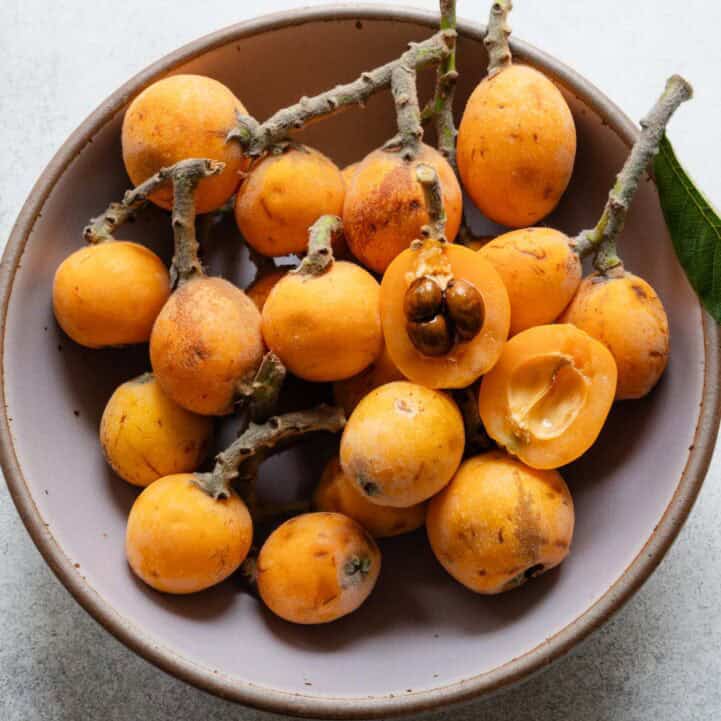
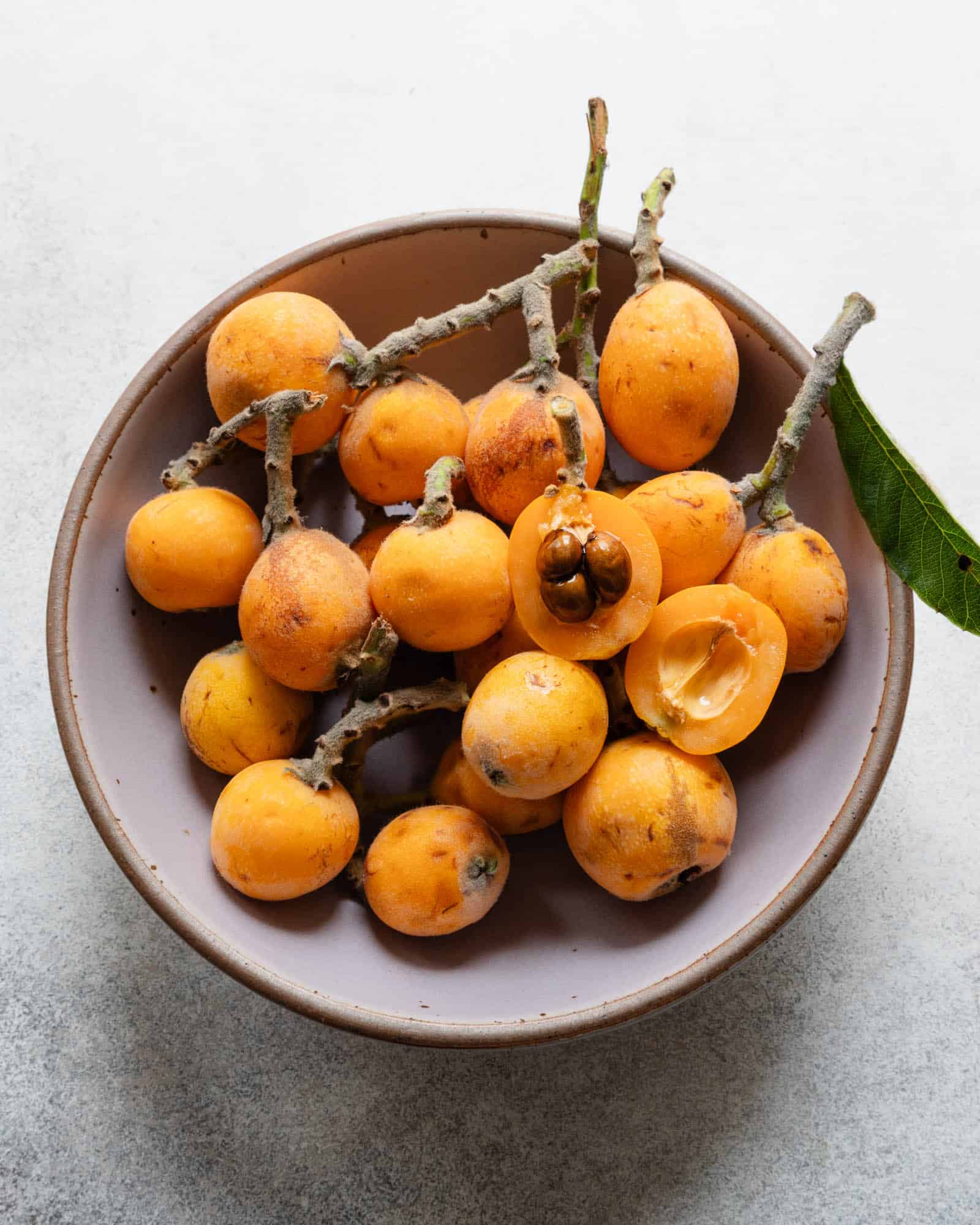
WHAT ARE LOQUAT FRUIT?
Around late-May to June, I usually see loquats ripening on a few trees in Sacramento or clusters being sold in farmers markets and San Francisco’s Chinatown. These fruits have a golden orange color and they look like small apricots without the fuzzy skin.
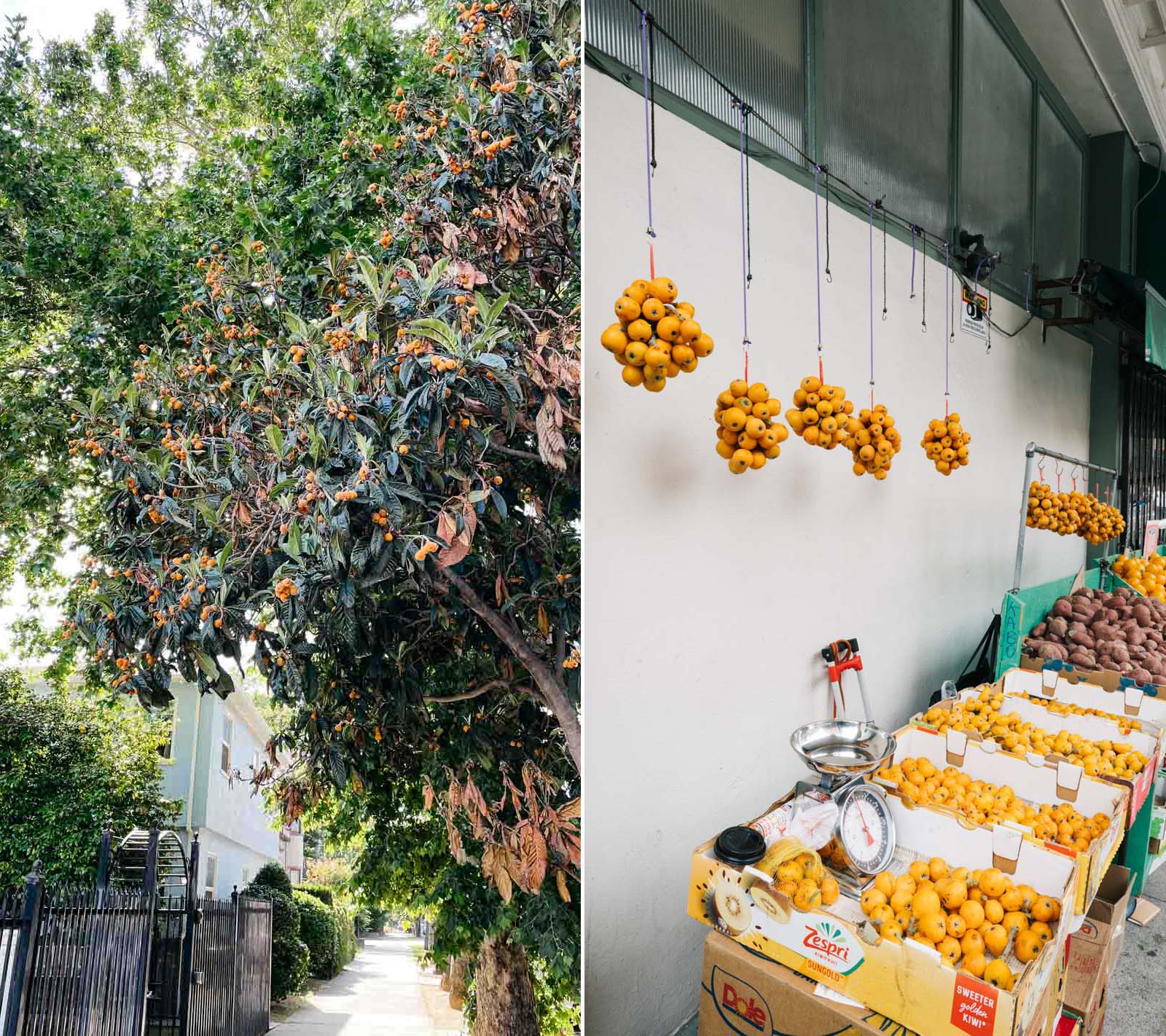
Although loquat fruit are native to China and have been cultivated in Japan for over a thousand years, these fruits are now grown in many warm weather regions of the world. In Chinese, loquat are called 枇杷 (pronounced pay pah in Cantonese and pi pa in Mandarin) or 蘆橘 (pronounced lo gwat in Cantonese–presumably where the word “loquat” comes from; and lu ju in Mandarin). In Japanese, loquat are called biwa (琵琶 in kanji).
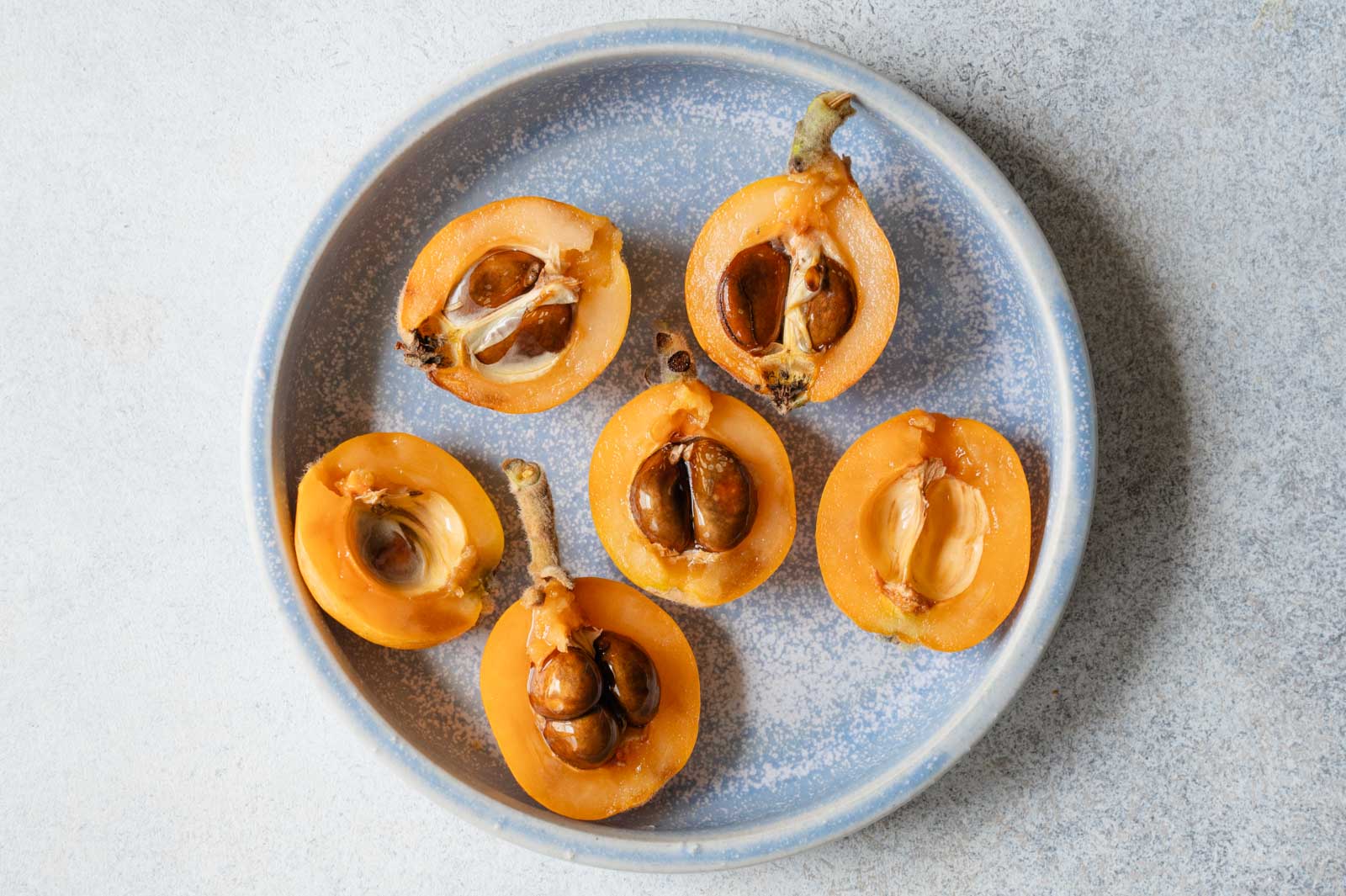
The texture of the fruit is very similar to apricots, but the flavor is not as sweet or floral. At the center of each fruit is a seed pod that contains 2 to 4 seeds, surrounded by a paper-thin membrane. When consuming the fruit, I like to peel the skin because that’s how I grew up eating the fruit. However, the skin is edible. The seeds are slightly toxic, so spit those out when eating the fruit. I also recommend spitting out the thin membrane as it is incredibly chewy.
BENEFITS OF LOQUAT
Loquat are rich in potassium and Vitamin A. Some sources suggest that they contain anti-oxidants and have anti-inflammatory properties. In Traditional Chinese Medicine (TCM), loquat are often used in cough syrups or soups to soothe the throat and suppress coughing. According to the book Ancient Wisdom, Modern Kitchen by Yuan Wang et. al., in TCM, loquat can help clear “Lung Heat,” relieve coughing symptoms, and moisten the lungs. By the way, Ancient Wisdom, Modern Kitchen is an excellent resource for TCM. You can grab a copy on Bookshop.org or Amazon (affiliate links).

When I caught a cold as a kid, I got very excited about eating loquat cough syrup because it was sweet and tasty. You can also find loquat cough drops, though I think the overpowering menthol flavor of the cough drops make them taste bad.
HOW TO PICK LOQUAT FRUIT
Because these fruits bruise easily and they’re only grown in warm weather regions, it’s not easy to find fresh loquat. However, if you happen to find any at the farmers market, at a Chinatown grocery store, or even a neighbor’s tree, here are a few tips for picking loquat.
Look for fruits with even rich golden orange color, like apricots. If you see any green or pale yellow color, it means the fruits are not ripe yet and are quite tart. Unfortunately, I’ve learned over the years that the fruits don’t ripen off the tree. Even if you let the fruits sit on the counter for days, until the skin turns a rich orange color, the fruit will not turn much sweeter.
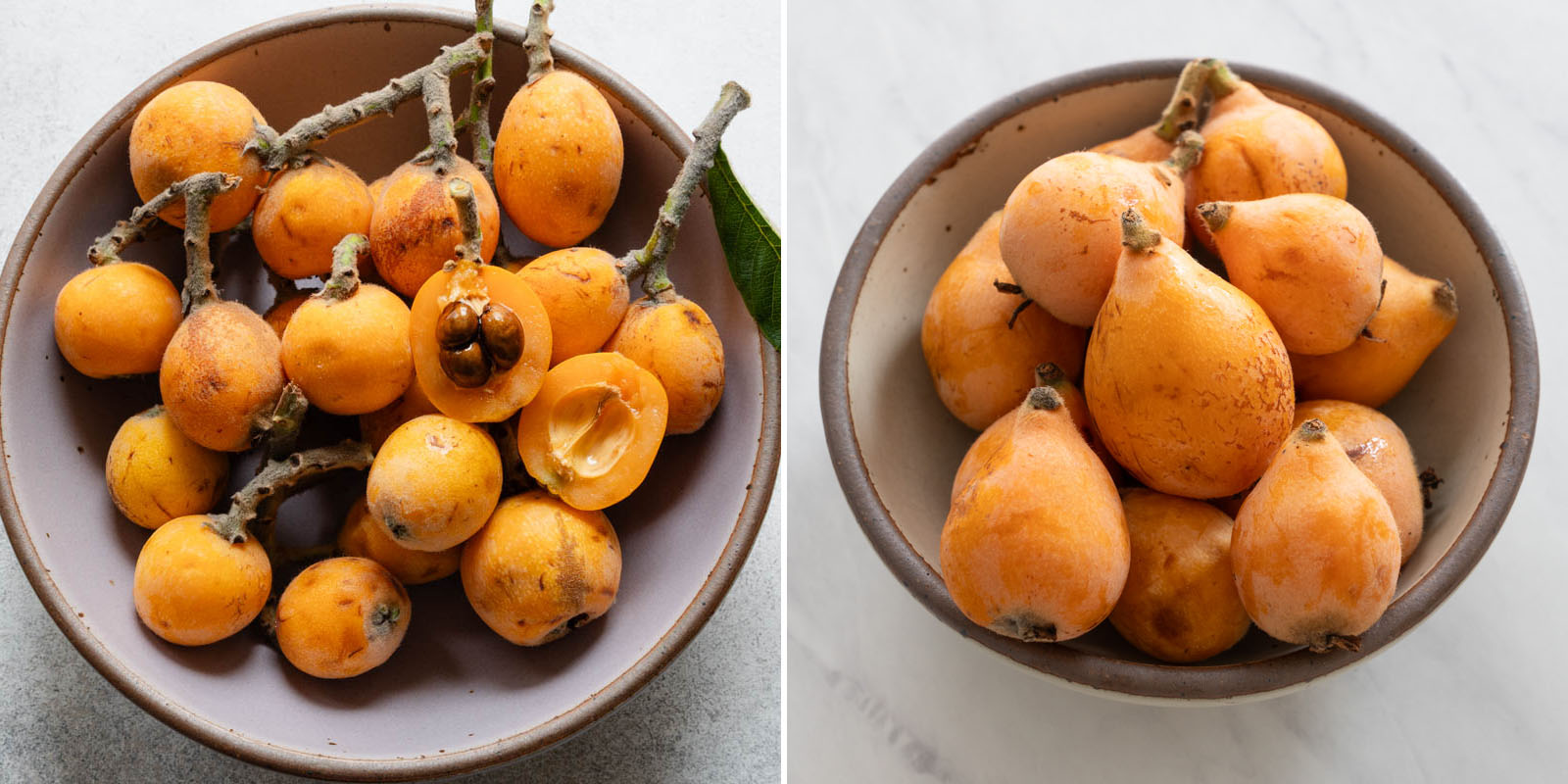
My mom recently told me that certain varieties of loquat are sweeter. In general, loquat that are more circular in shape are not as sweet as loquat that are more elongated (they can be oval or teardrop shaped). Once you purchase loquat, store them in a breathable bag in the fridge.
WAYS TO EAT LOQUAT
I think these fruits are best consumed fresh. Although peeling the skin is not necessary, I do it out of childhood habit. I tried making jam with loquat and it was way more hassle than it was worth. You’d have to remove the seed(s), the tough membrane covering the seeds, as well as the skin. Because of all the work, I’d rather just eat the fruit while it’s fresh instead of processing it for cooking.
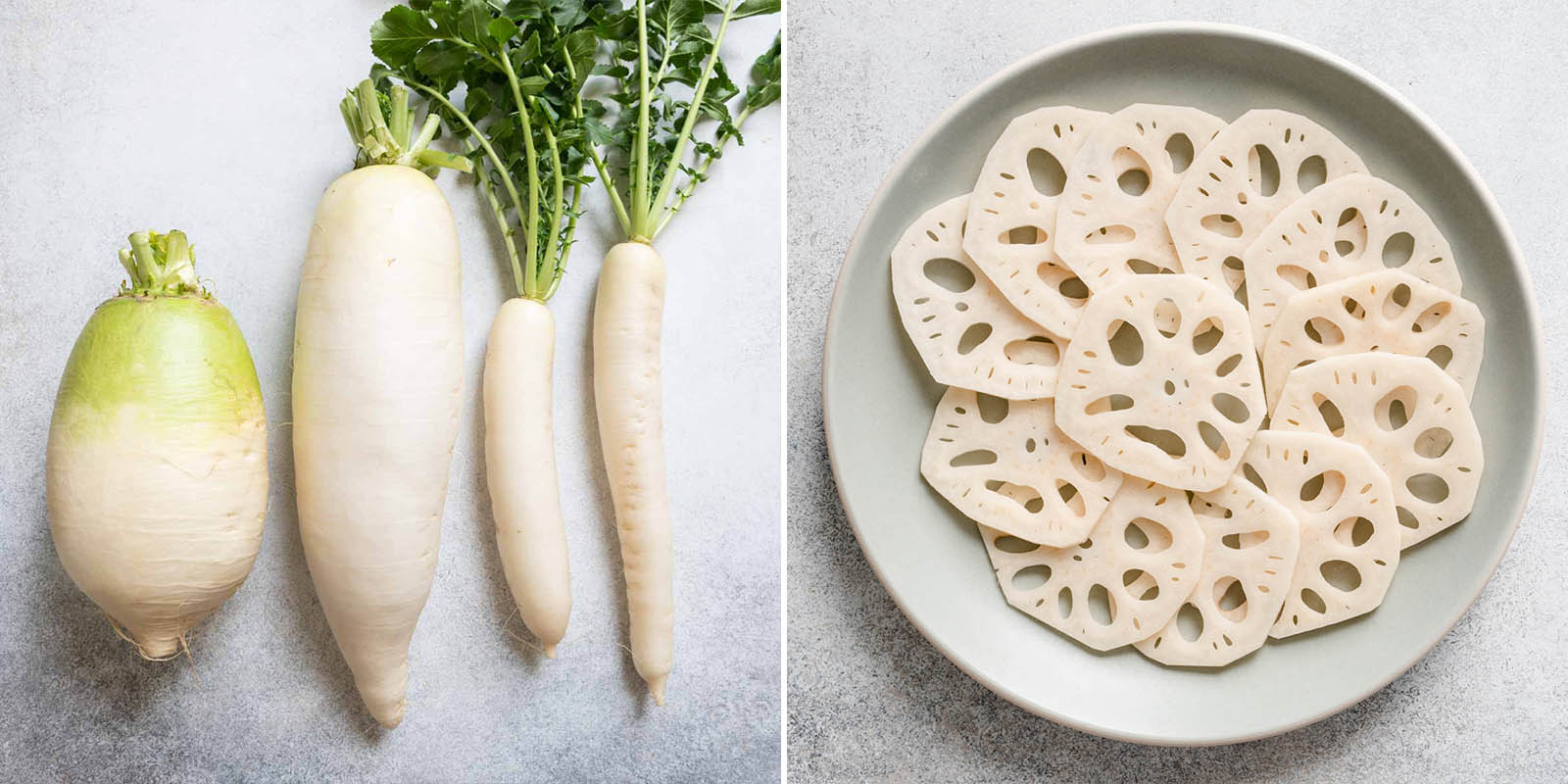
MORE PRODUCE GUIDES
The post Loquat Fruit: Benefits & Tips on Picking appeared first on Healthy Nibbles by Lisa Lin.


